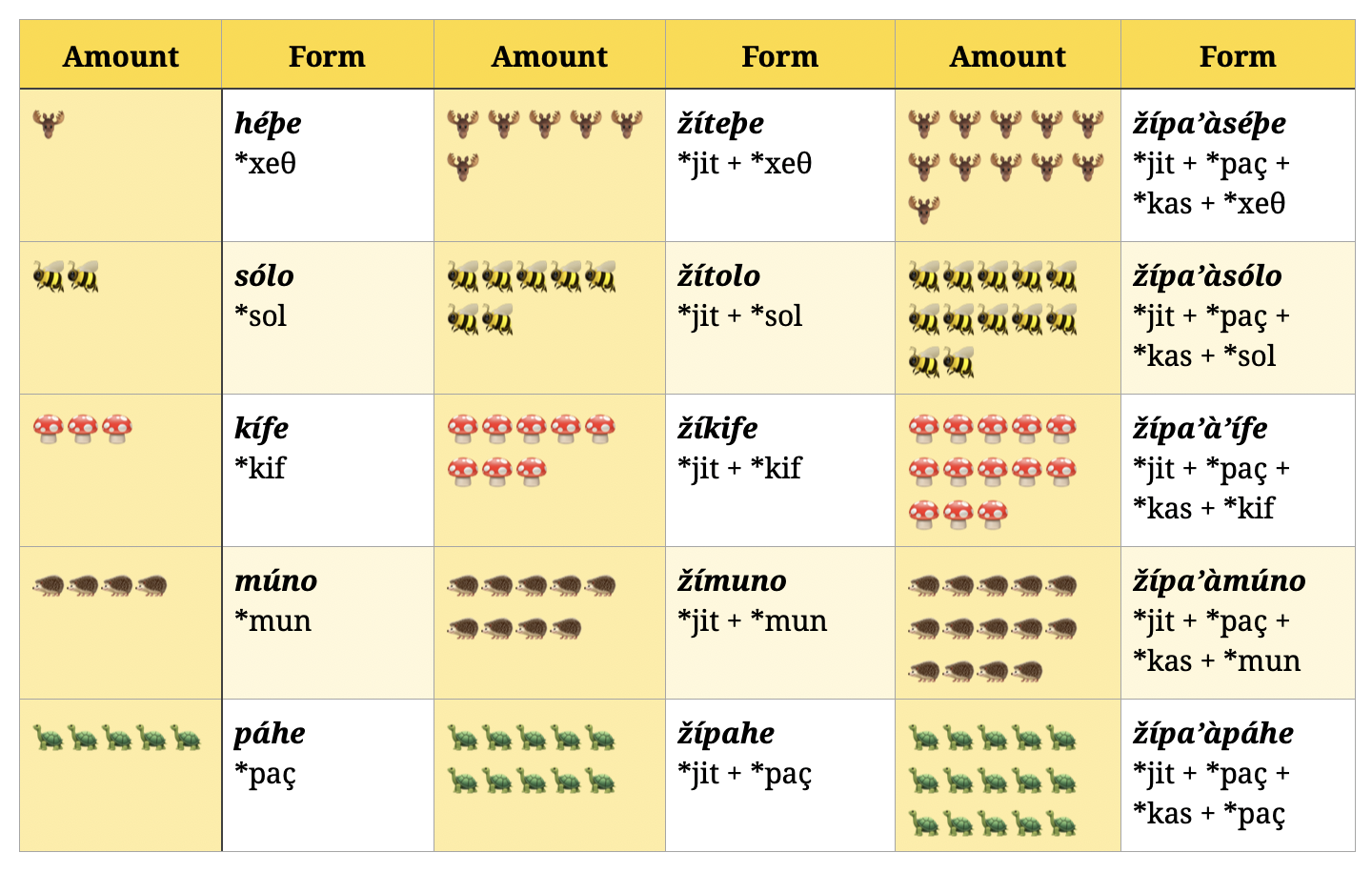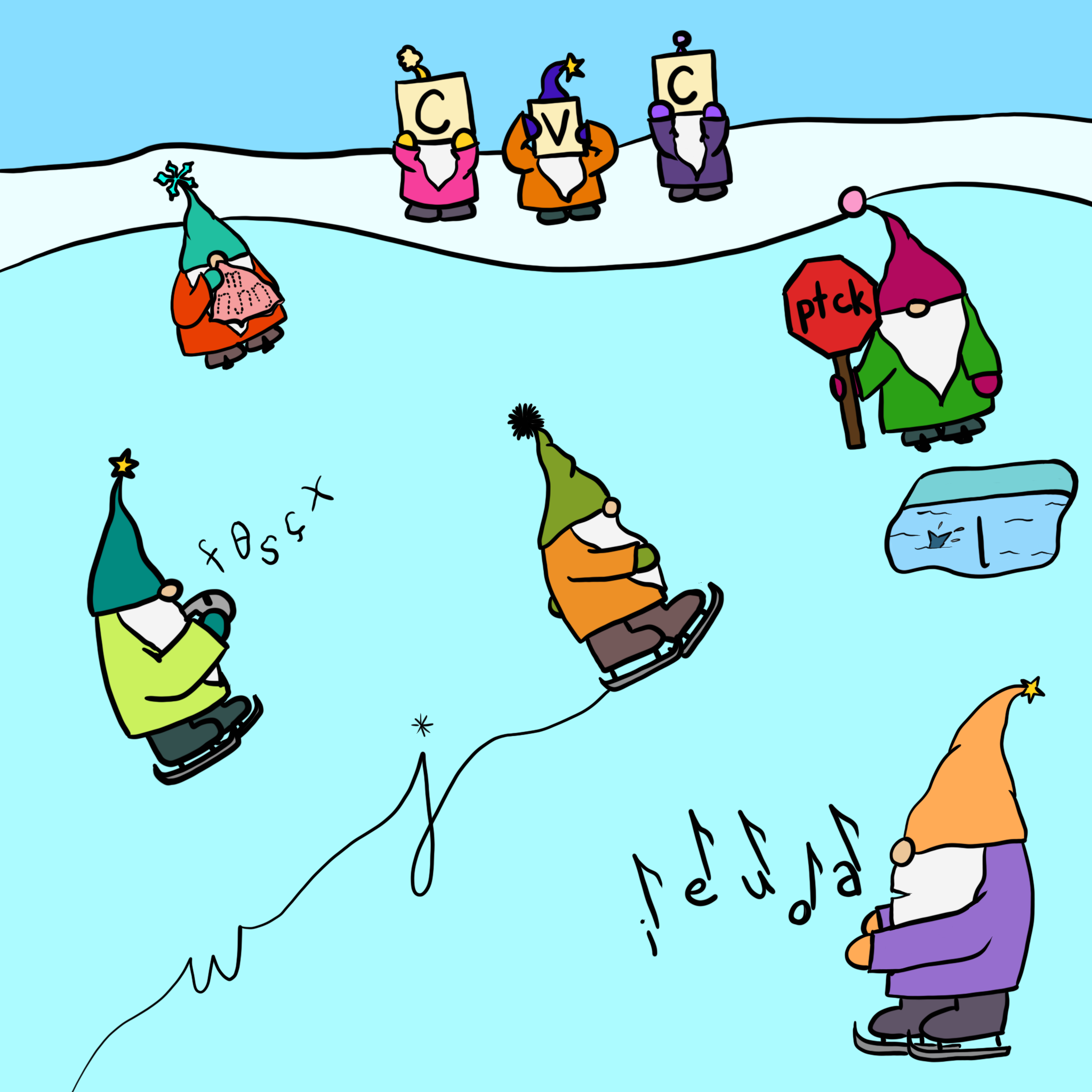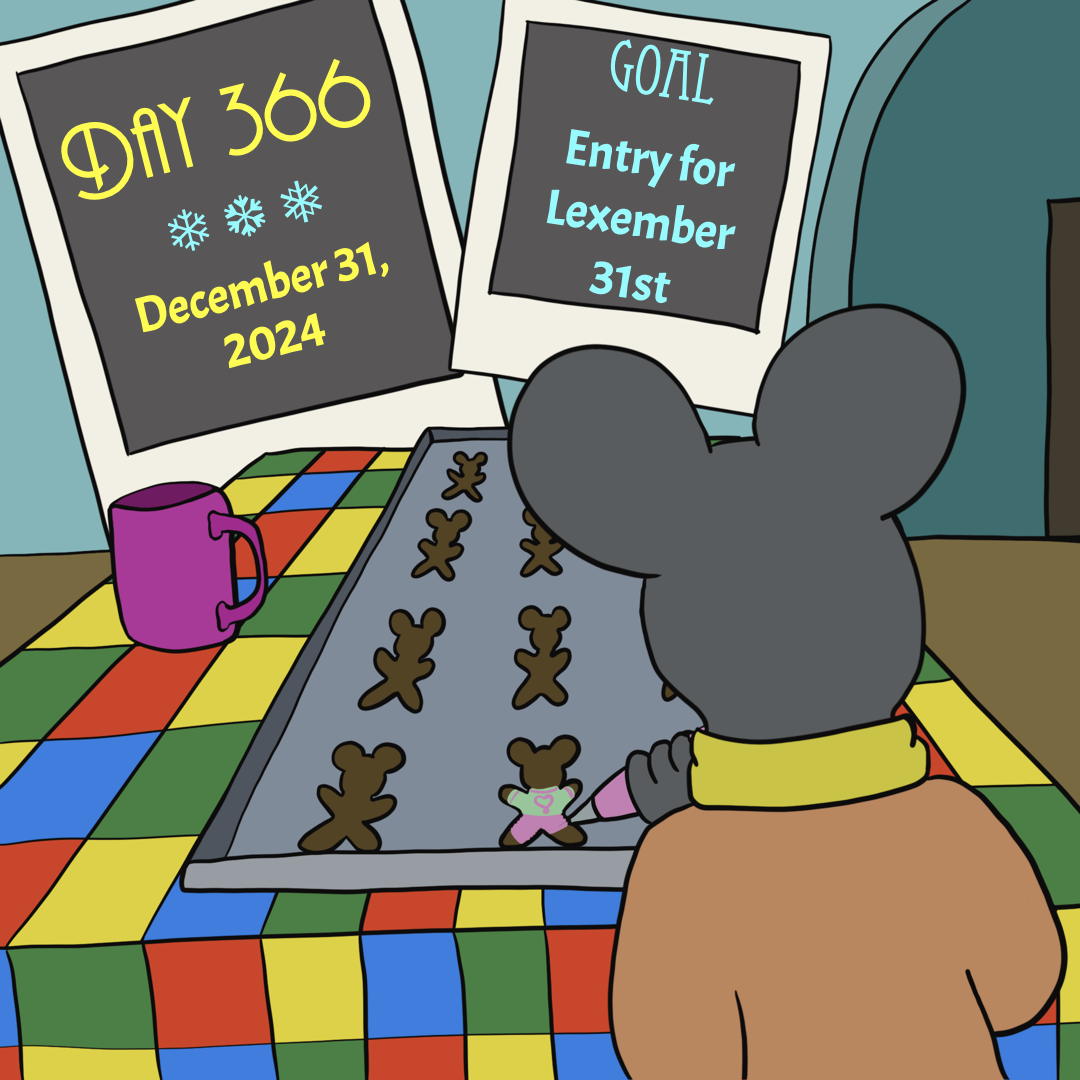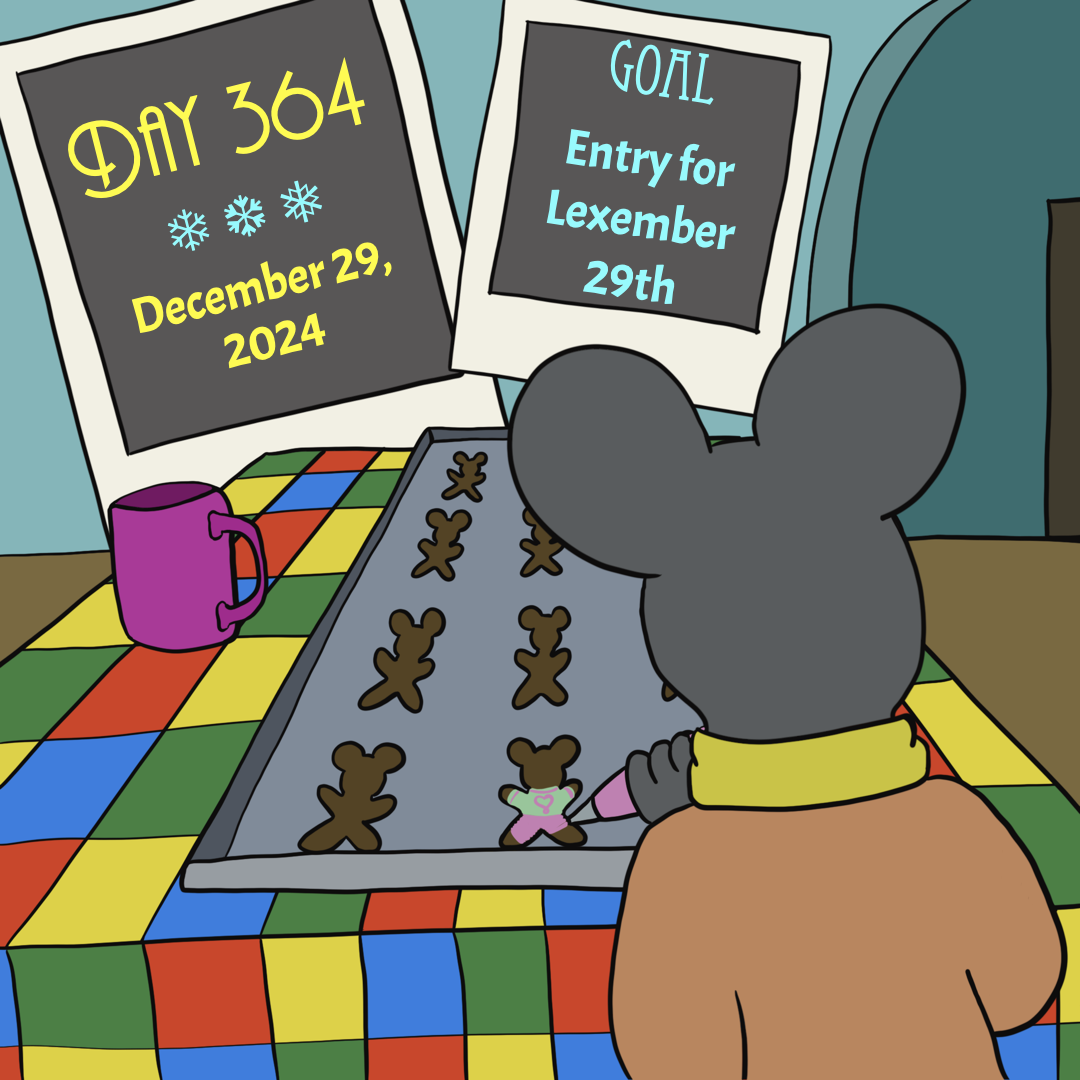Tag: conlang
-

Nómàk’óla Numbers
I spent quite a bit of time figuring out numbers and how they work in Nómàk’óla (i.e. NisseLang). The nisse have a base-5 counting system. As a general practice, they count on one five-fingered hand (to keep the other hand free!), and as they count, they raise a finger. When they hit five, they put…
-
NisseLang Gets a Name!
During today’s very fruitful conlanging session, I gave NisseLang a language name! The language name is Nómàk’óla, which means “voice of the Northern Lights” and connects with the nisse lore that they come from the Northern Lights. The speakers refer to each other as nísse, which comes from an old compound meaning “guardian” (they view…
-
NisseLang Passive Construction
After taking a little hiatus from my NisseLang project as I worked on other languages, I returned to my document today to refamiliarize myself with the language and to build more features for it. As a bit of cleaning up, I made some edits to the bipersonal-marking chart for the verbs (previously, I had kept…
-

NisseLang Word Order
In its modern form, NisseLang is a highly synthetic OVS language with head-initial tendencies. In its proto-forms, NisseLang was VSO and more isolating. I mapped out the journey from its earliest stages to modern forms in seven major stages, using the sentence “I threw a rock” to demonstrate the grammatical evolution. The modern from of…
-

NisseLang v. Wokuthízhű sounds
I mentioned the similarities between the NisseLang and Wokuthízhű sound inventories (specifically focusing on the modern sounds), which prompted me to make a chart to see just how similar the inventories are. The verb inventories absolutely match with one caveat: for each vowel quality, NisseLang has a short-long distinction where Wokuthízhű does not. The vowel…
-

NisseLang Sounds
Last year I created an image to highlight the sounds I selected for the proto-stages of my NisseLang. I decided to stick with what I had already created as I continued work on that project this year. Here is the image: As shown in the image, Proto-NisseLang has a classic five-vowel system of [i, e,…
-

My Very Own Conlang Year Adventure
Last year I tried to start a conlang while also posting a daily prompt for Conlang Year. Let’s just say… it didn’t go so well for my conlang, but I managed to post a prompt every single day. So that’s a win! This year, I decided I want to try out my own Conlang Year…
-

Day 366: December 31, 2024
Goal: Entry for Lexember 31st Work focus: Solidify/Write/Share You’ve made it! It’s the final day of Conlang Year, and the final day of Lexember! Take a moment to reflect on all your work and appreciate what you’ve done in a short amount of time. As you celebrate your work, remember that a language is never…
-

Day 365: December 30, 2024
Goal: Entry for Lexember 30th Work focus: Solidify/Write/Share When Conlang Year ends, you don’t need to stop working or sharing your work. Keep sharing! A great way to continue sharing your work is by participating in conlang relays. You can find a conlang relay to join or even start your own.
-

Day 364: December 29, 2024
Goal: Entry for Lexember 29th Work focus: Solidify/Write/Share While you wrote a language document during the Conlang Year prompts, another way to document your language features is by describing your language using the same features typologists use for natlangs. For instance, I created a spreadsheet for Grambank features for conlangers to share their language features.…